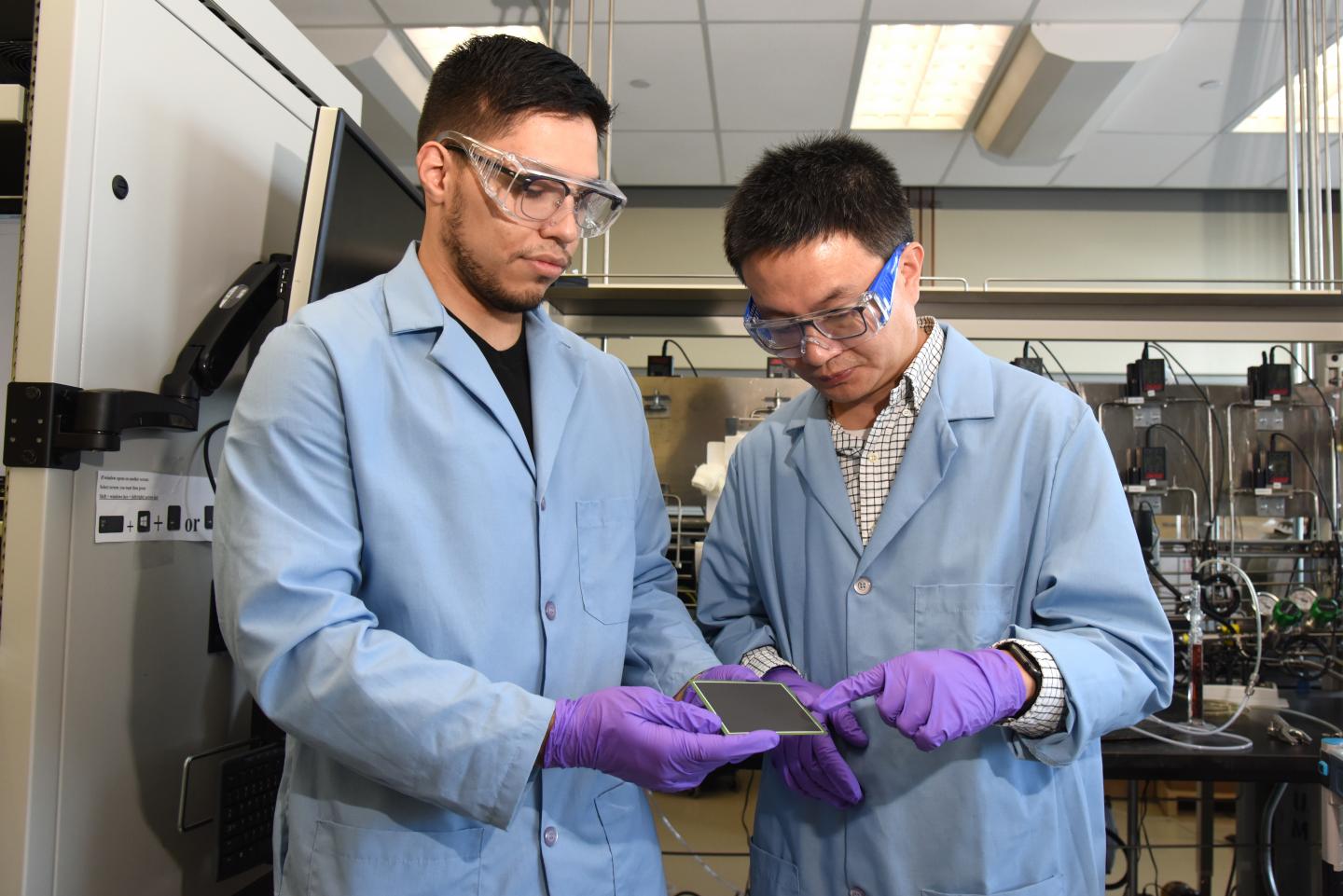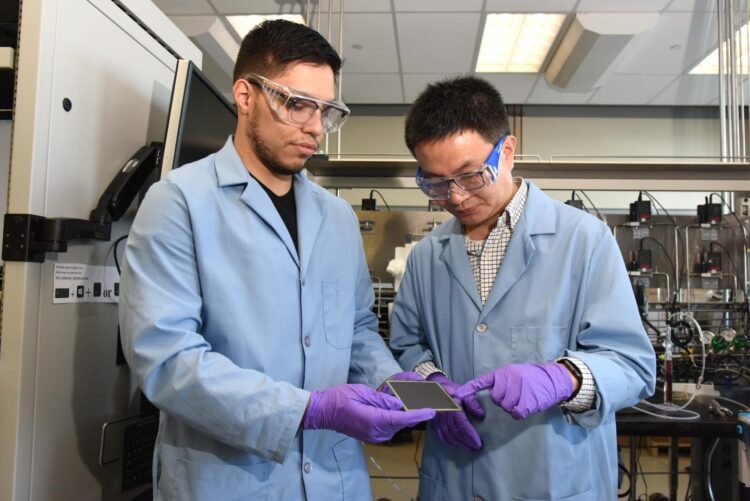
Credit: Idaho National Laboratory
Idaho National Laboratory is a member of two new Department of Energy research consortia charged with exploring new methods and technologies for hydrogen production. Hydrogen can effectively store excess electricity, which can be harvested later via fuel cells. These consortia – H2NEW and HydroGEN 2.0 – were formed to discover how “green” hydrogen can be produced more efficiently and less expensively.
“DOE has a strong interest in hydrogen generation,” said INL researcher Gary Groenewold, who is leading the lab’s involvement in the H2NEW consortium. “They’ve got technology they feel can be pushed from mid-range research to the pilot plant level.”
INL and the National Renewable Energy Laboratory (NREL) will co-lead H2NEW, which will advance state-of-the-art hydrogen production using low temperature electrolysis and high temperature electrolysis. The program will conduct research, development and demonstration of large-scale, affordable electrolyzers — devices that use electricity to split water into oxygen and hydrogen. The end goal is to be able to produce hydrogen at a generalized cost of $2 per kilogram. Today, carbon-free hydrogen from electrolysis costs about $5 to $6/kg to make assuming electricity prices of $0.05/kWh to $0.07/kWh.
The second consortium, HydroGEN 2.0, is led by NREL. It will focus more on fundamental science questions by facilitating collaborations between national laboratories, academia and industry. The consortium’s steering committee has representatives from DOE and each of the six member labs. Dr. Richard Boardman is INL’s representative.
Both consortia are funded by DOE’s Hydrogen and Fuel Cell Technologies Office, within the Office of Energy Efficiency and Renewable Energy. Collectively, these efforts support EERE’s H2@Scale vision for affordable hydrogen production, distribution, storage and utilization across multiple applications.
INL is widely known for its expertise in solid oxide electrolysis cells (SOECs). For years, INL researchers have experimented with solid oxide electrolysis stacks, splitting water molecules at lower temperatures and reducing stress on SOEC materials. In 2018, INL researcher Dong Ding and his colleagues demonstrated high-performance electrochemical hydrogen production at a lower temperature than seen before. In a paper published by the journal Advanced Science, Ding reported on a highly efficient proton-conducting solid oxide electrolysis cell (P-SOEC) that incorporates a 3D ceramic steam electrode. During testing, the cells operated below 600 degrees Celsius at a highly sustained rate for days.
In 2020, Ding led a team of INL researchers to pioneer a reversible electrochemical cell that efficiently converts excess electricity and water into hydrogen but also, when called for, can convert hydrogen back into electricity for the grid. The hydrogen can be used as fuel for heat, vehicles or other applications. The results appeared in the scientific journal
“The people in his group are working at a very high level,” Groenewold said.
INL is a U.S. Department of Energy (DOE) national laboratory that performs work in each of DOE’s strategic goal areas: energy, national security, science and environment. INL is the nation’s center for nuclear energy research and development. Day-to-day management and operation of the laboratory are the responsibility of Battelle Energy Alliance.
###
See more INL news at http://www.
Media Contact
Abby Todd Bloxham
[email protected]
Original Source
https:/





